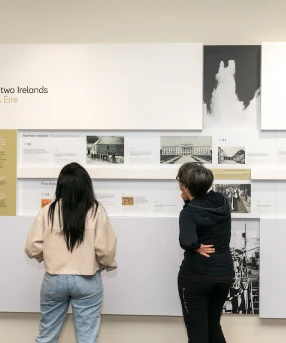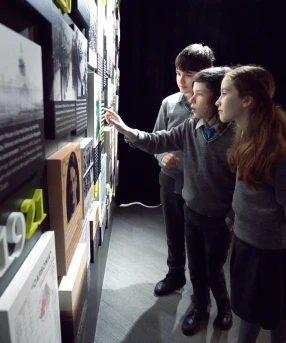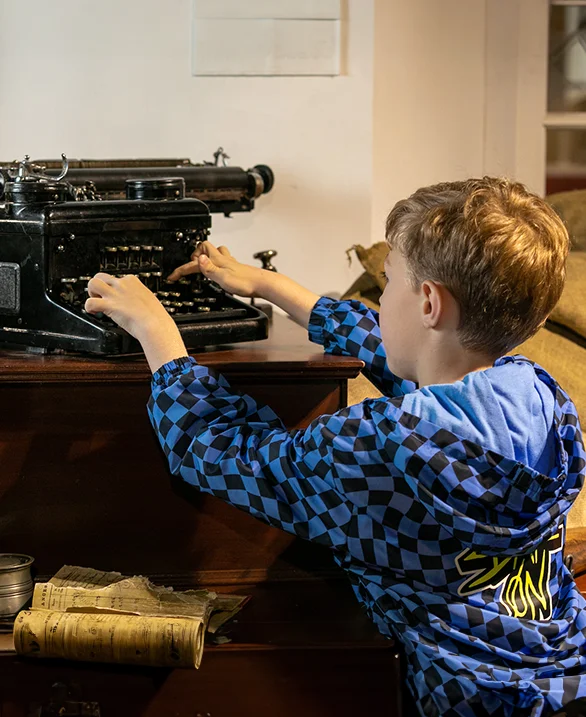
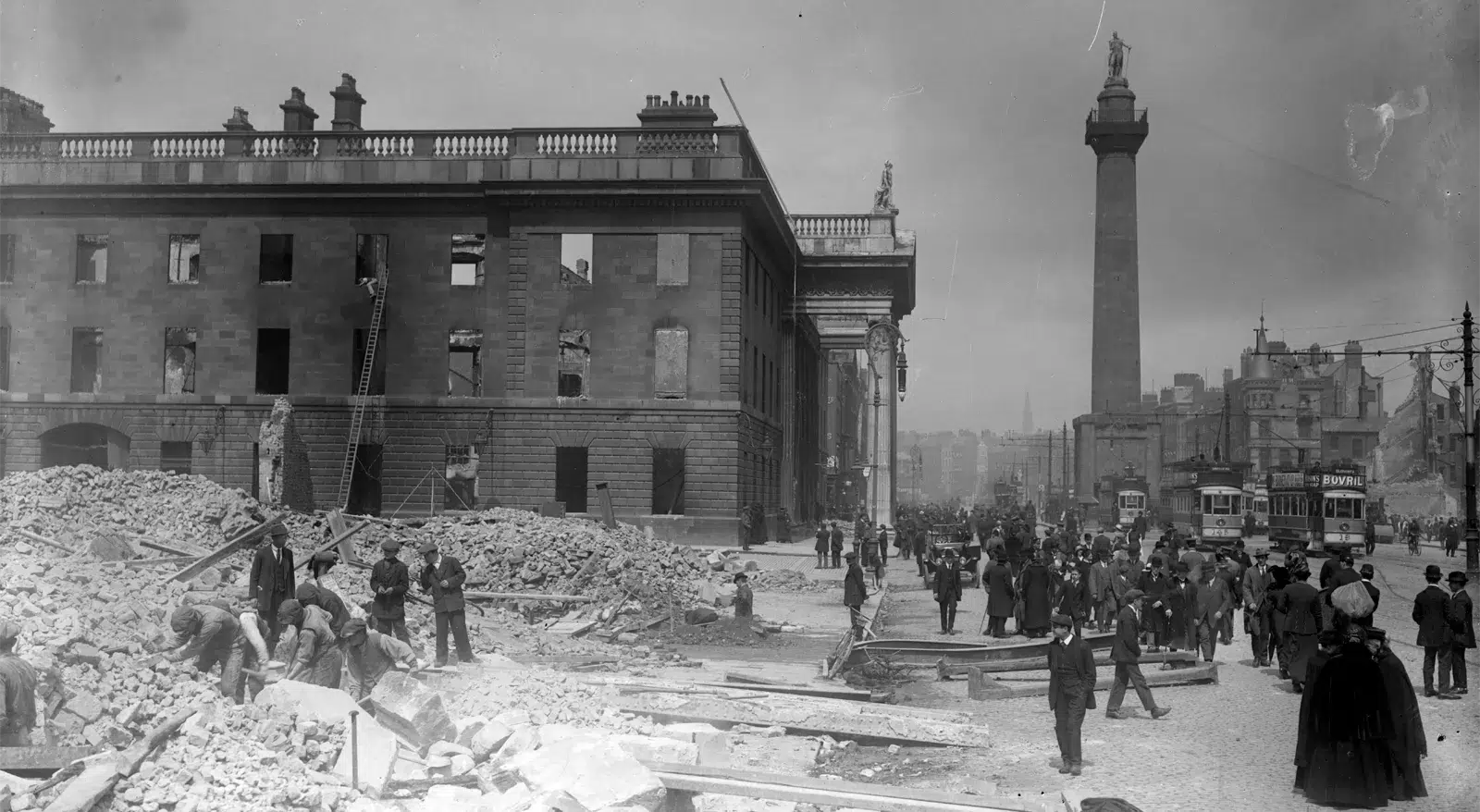
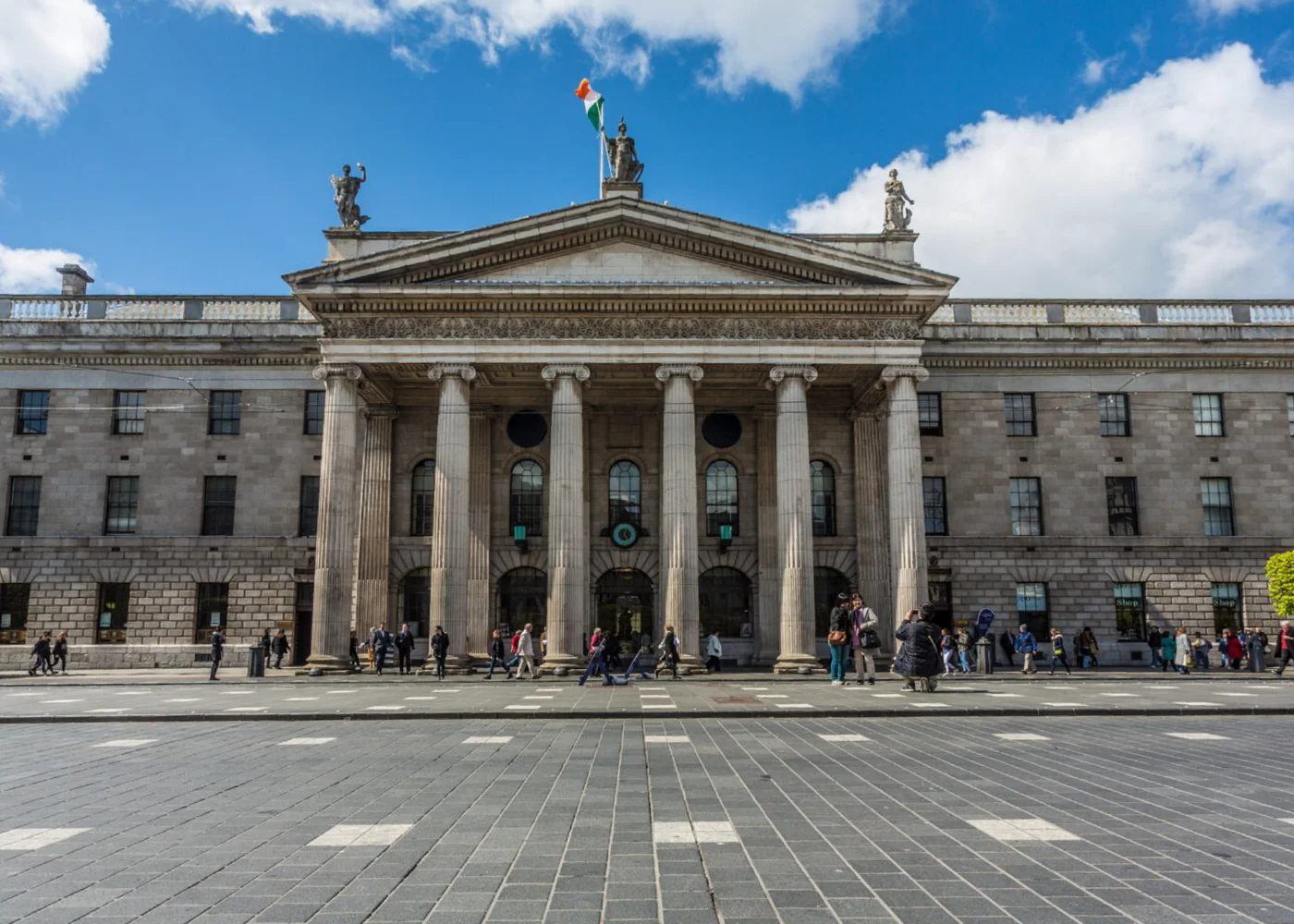
Journey through Ireland’s History
GPO Museum is located within Dublin’s General Post Office (GPO) and it was the headquarters of the 1916 Easter Rising which changed the course of Irish history.
Ireland was declared a sovereign nation on Easter Monday, April 24th, 1916, outside the GPO when rebel leader Patrick Pearse read the Proclamation of the Irish Republic.
GPO Museum tells the story of the 1916 Easter Rising and modern Irish history in an iconic setting.
The main historical themes within the museum are as follows.

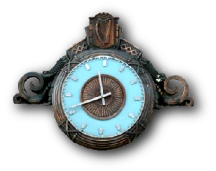


The Cultural Revival
In the late 1800s and early 1900s Ireland was enjoying a Cultural Revival across literature, sport and the Irish language. The Revival not only offered Irish people a stronger sense of national identity, it also provided a recruitment ground for revolutionary movements prior to 1916. The cultural organisations established at this time – the Irish Literary Theatre (later the Abbey Theatre), the Gaelic League and the Gaelic Athletic Association (GAA) – are widely regarded as the three pillars of the cultural nationalist movement.
Political Backdrop
By the end of the 1800s two nationalist traditions were struggling to win independence for Ireland - republicans and constitutional nationalists. At the same time a younger, more radical generation continued to believe that only physical-force republicanism could win real independence.

Social Conditions
In the early 20th century, although many Irish people enjoyed a good standard of living, thousands of Dubliners were suffering from the effects of poverty and were living in the worst tenements in Europe, with most depending on casual labour for their income. By the 1910s, the death rate in Dublin was 22.3 per thousand and 26,000 families were living in one-room dwellings.

World War I
In August 1914, World War broke out between Britain and Germany and within a year, 80,000 Irishmen had enlisted. The First World War had a profound impact on Ireland’s people and politics and directly influenced the events of Easter 1916. For the more radical minded, the First World War provided an opportunity: with Britain’s attention focused elsewhere, it was the perfect time for a rebellion.

1916 Easter Rising
On Easter Monday 1916 a group of rebels stormed a number of strategic locations around Dublin, including the General Post Office (GPO) which was the headquarters of the rebellion. Their aim was to ignite a national rebellion and bring about independence for Ireland. One of the rebel leaders – Patrick Pearse - stood outside the GPO and read the Proclamation of the Irish Republic, which declared Ireland to be a sovereign, independent state. A week of intense fighting followed, leaving the city centre devastated and the rebels defeated. Over 480 people were killed, most of them civilians.
The Aftermath
While, the initial public reaction to the rebellion was largely negative, it was the nature of the British retribution that would have the most profound effect on how the Rising was viewed and understood by Irish people. Militarily, the Rising was a failure, however the rebels had achieved one of their main aims - they had radicalised Irish nationalism. As war waged in Europe, momentum continued to build for the nationalist movement in Ireland.

The War of Independence
The War of Independence, from 1919-21, involved assassination, reprisal and counter-reprisal. The military conflict between the British armed forces and the Irish Republican Army (IRA) consisted of sporadic guerrilla fighting and was paralleled by the self-proclaimed Irish government’s efforts to achieve an independent Irish Republic. Law and order effectively ceased in Ireland until a truce ended the war on 11th July 1921. Approximately 2,000 people had died in the conflict.

The Treaty
The truce brought Sinn Féin and the British government to the negotiating table in London a few months later. On 6th December 1921, the Irish representatives signed the Anglo-Irish Treaty. It established the Irish Free State. However, the terms of the treaty also meant that the Irish Free State would be a Dominion of the British Empire, meaning Ireland’s politicians would have to take an oath of allegiance to the British monarch.

The Irish Civil War
The Anglo-Irish Treaty split the Irish Republican movement. The provisional government, under Michael Collins, argued it was the best deal attainable, while anti-Treaty republicans led by Éamon de Valera saw the treaty as a betrayal of the Republic. Civil war broke out in June 1922. Men and women who had once stood together against the Crown forces were now fighting each other. By April 1923 almost 2,000 people had been killed in the war and it’s bitter legacy divided Irish society and politics for decades.

Free State & Northern Ireland
The Anglo-Irish Treaty confirmed the partition of Ireland as established in the 1920 Government of Ireland Act. In 1924 a commission was established to assess whether the border should be partially redrawn. No changes were made and the existing border was confirmed by the leaders of the Irish Free State, Northern Ireland and Britain on 3rd December 1925.
The Free State eventually became a sovereign republic in 1949. In the decades that followed, the relationship between the north and the south was complex and turbulent.

The Troubles
‘The Troubles’ refers to the thirty years of conflict in Northern Ireland from 1969-1998, during which more than 3,400 people were killed and many more seriously injured. Over the course of the 1960s and early 1970s, there was a rise in membership of paramilitary organisations. During the 1970s and through the 1980s, assassinations, bombings and other acts of terrorism were carried out by Loyalist and Republican paramilitary groups. Despite the ongoing violence, negotiations between Northern Irish political parties and the British and Irish governments began in the early 1990s.

The Good Friday Agreement
This landmark agreement solidified the peace process with a devolved assembly and multi-party power-sharing executive in Northern Ireland. It was endorsed in a referendum – the first time the people of the island had gone to the polls together since 1918. The referendum result committed all parties to the principle of consent, the decommissioning of weapons, and the normalisation of security. The Good Friday/Belfast Agreement has recognised the right of people in Northern Ireland to identify themselves as Irish, British, or both. The Republic is linked to Northern Ireland by a web of shared institutions, both in the European and British-Irish contexts.

2000s
Since the Good Friday Agreement relations between the Republic of Ireland, Northern Ireland and Britain have improved, culminating in Queen Elizabeth II’s visit in 2011, the first official visit to an independent (southern) Ireland by a British head of state.

Same-Sex Marriage
Marriage equality was approved in a referendum with 62.1% voting in favour. The Republic of Ireland was the first state in the world to approve gay marriage through a referendum.
